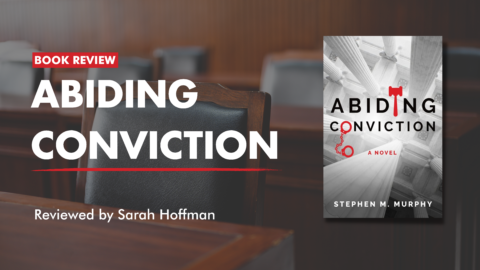Take a moment to think about your typical workday.
If you look closely, every workday is simply a series of hundreds of mini-situations you must think through in order to make it through the day:
- How do I deal with a challenging client?
- How do I address my lack of motivation around this particular task I have to complete?
- How do I build a schedule today that will help me eliminate distractions and complete my most important projects?
It turns out that the way we think about and respond to these situations generally determines the kind of day we have. A “successful” day usually consists of having approached these situations in a way that allowed us to manage and deal with our thoughts about the situation in a constructive and positive way.
At my company DueCourse, we call this Workday Mindset. Your Workday Mindset is an established set of beliefs and attitudes you use to process information and respond to situations at work. It helps shape your focus, guide your decisions, and influences your outlook.
Here’s another way to think about it: Your Workday Mindset is like a filter through which you pass all of your thoughts. Each of us has the ability to decide how we want to think about and respond to what happens at work, and the more attention we pay to the way we think, the more intentional we’ll be about the way we act.
Consider, for example, a common situation we can all relate to: receiving constructive feedback. It’s easy to view receiving feedback as a situation to be avoided, given the potential it has to sting and leave us feeling criticized or disappointed with our performance. But at the moment we receive feedback, we each have the ability to apply a certain mindset that allows us to view feedback as an opportunity to improve and grow professionally. It’s a choice we can make based on the attitude we have about the value of such information.
There are hundreds of Workday Mindset principles and concepts you could consider in an effort to improve how you think at work, but here are three general concepts and related action steps you can take to start putting these ideas into practice.
Concept #1: Situational Awareness
In the workday context, situational awareness is the ability to be present and recognize an opportunity, in the moment, to think or act with intention. In other words, rather than simply reacting, you have the presence of mind to acknowledge that you’re in a challenging situation where you can deploy a type of thinking that will help you navigate through that moment.
Try this: One way to hone your situational awareness is to practice what we call First Thought, Second Thought, First Action. Here’s how it works: It’s hard to control the first thought that comes to mind (if I tell you to not think of a big pink elephant, it’s nearly impossible to not picture one immediately), but we generally do have control over our second thought and the first action we decide to take. So while we might not be able to change our immediate thoughts about a situation we encounter, we do have the ability to change what happens after that.
Consider our constructive feedback example. In the context of a workday, you might not have control over the first thought you have, e.g., I don’t really want to listen to this constructive feedback I’m about to receive. But you do have the ability to direct your second thought—I can use this feedback to get better. You can also direct your first action—I’m going to listen with intent and think about how to apply the feedback in the future.
If you want to change the way you respond to a certain workday situation, try to catch yourself having that first thought, insert a constructive second thought, and then act with intention.
Concept #2: Focus on Small, Daily Wins
Unfortunately, many of us spend a large portion of our day in a state of stress and thinking about all of the things that are not going well. We constantly feel behind, are focused on things that aren’t going well, and end up leaving the day thinking about all of the things we didn’t get done. We spend little time, if any, thinking about all that we accomplished.
It turns out though that our brain is incredibly receptive to even small amounts of time spent acknowledging “wins” or things that went well during the day—a positive conversation you had with a colleague, progress made on an important project, or a client who expressed satisfaction with your work—the science behind how our brain works tells us that focusing on small wins helps build momentum, improve confidence, and lead to a happier workday.
Try this: At the end of your workday, spend a few minutes identifying things that went well that day. Rather than focus on what you weren’t able to accomplish, shift your focus to the things you did accomplish and take a moment to celebrate those wins.
Concept #3: Start the Day with Intention
Think about how you start your workday. What’s your process for deciding what you’re actually going to do that day? Many of us start our workday by diving headfirst into whatever is within our field of vision—responding to emails, returning phone calls, knocking out small, mindless tasks—without taking any time to think through how we actually want to spend our time.
Instead of starting the day with whatever is right in front of you, consider spending the first few minutes of your work morning thinking about what you want to accomplish that day. In other words, move into the day with intention and a clear purpose for what you want to do that day.
Try this: One of my favorite ways to exercise intention in a workday is what we call an Open Up Checklist. The idea is simple: Create a list of three to five things you do each day to start the day with planning. Your list could include things like:
- Review your calendar for that day and the rest of the week.
- Identify one or two key projects you want to work on that day.
- Block off a distraction-free time block on your calendar (start with thirty minutes) to work on those key projects.
- Identify one thing you’ll do that day to take care of yourself at work (drinking water, getting up from your desk at least once an hour, taking a fifteen-minute break to walk around the block).
The idea is to keep your list short and repeat this routine every morning before actually starting your work. Taking steps like this not only gives you clarity about what you need and want to work on, but it allows you to be an active participant in shaping your workday.
About the Author
Drew Amoroso is an attorney, public speaker and founder of DueCourse. DueCourse is a mobile application that’s changing the way professionals think at work, specializing in workday mindset and situational skill building.




